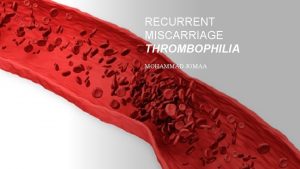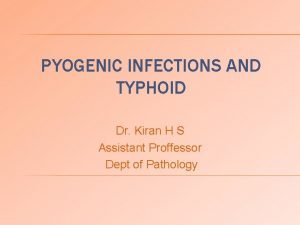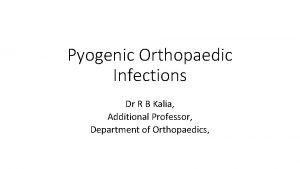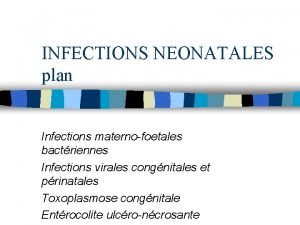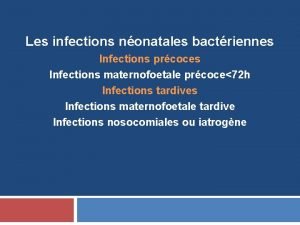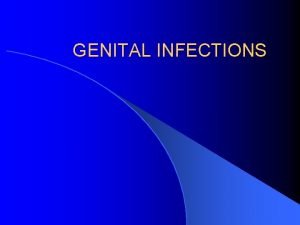CVID Major features Recurrent pyogenic infections with onset










- Slides: 10

CVID- Major features Ø Recurrent pyogenic infections, with onset at any age Ø Increased incidence of autoimmune disease Ø Total immunoglobulin level < 300 mg/d. L , with Ig. G level < 250 mg/d. L Ø B cell numbers usually normal

CVID ØCommonest symptomatic primary antibody deficiency ØHeterogenous group of immunological disorders, decrease serum Ig and antibody response ØPrevalence: 1/50, 000 – 1/100, 000 ØOccur in any age ØSex: equal

Etiology Ø B lymphocytes unable to differentiate into plasma cells Ø B cell defect T cell defect Activation defect

B Cell Defect Ø CVID B cell : phenotypic characteristics of immature B cell Ø CVID B cell+ normal T cell / CVID T cell + normal B cell Ø CVID B cell + mitogen + soluble T cell factors Ø Lack of external stimuli -> maturation arrest at immature B cell

T Cell Defect Ø 25 -30% patients CD 4/CD 8 ratio Ø IL-2, IL-4, IL-5, INF-g Ø Decreased proliferation to mitogen

Ø Suppressor T Cell Defect Overabundance -> lymphokines suppressing immunoglobulin synthesis (g-INF) Ø Activation Defect CD 40 ligand (gp 39) m. RNA and functional protein in 40% patients Ø Genetic Abnormality HLA class III region , between C 4 B and C 2 genes

Clinical Manifestations Ø Infections Ø Autoimmunity Ø Gastrointestinal disease Ø Lymphoproliferative disorders Ø Granulomatous disease

Infections Ø Recurrent bacterial infection caused by encapsulated bacteria, Streptococcus pneumoniae, Haemophilus influenzae, Staphylococcus aureus Ø Bordetella pertussis important in childhood Ø Frequent complication: chronic sinusitis and bronchiectasis Ø Fungus, mycbacteria, Pneumocystis carinii : rare Ø Enteroviral meningoencephalitis : echovirus-11

Profile of Infections (%) Recurrent bronchitis, sinusitis, otitis Pneumonia Viral Hepatitis H/O severe Herpes zoster Giardia enteritis Pneumocystis carini infection Mycoplasma pneumonia 98 76. 6 3. 2 2. 8 2. 4 Chronic Mucocutaneous candidiasis, Salmonella diarrhea, Campylobacter enteritis, Osteomyelitis, Septic arthritis, Nocardia brain abscess, etc. Cunningham-Rundes and Bodian (Clin Immunol 1999; 92: 34 -48)

Autoimmunity (n=248) AITP AIHA RA JRA Anti-Ig. A SS PBC Pernicious anemia Hyperthyroid disease SLE Vasculitis autoimmune diseases 15 12 5 4 7 2 3 3 2 2 3 56













